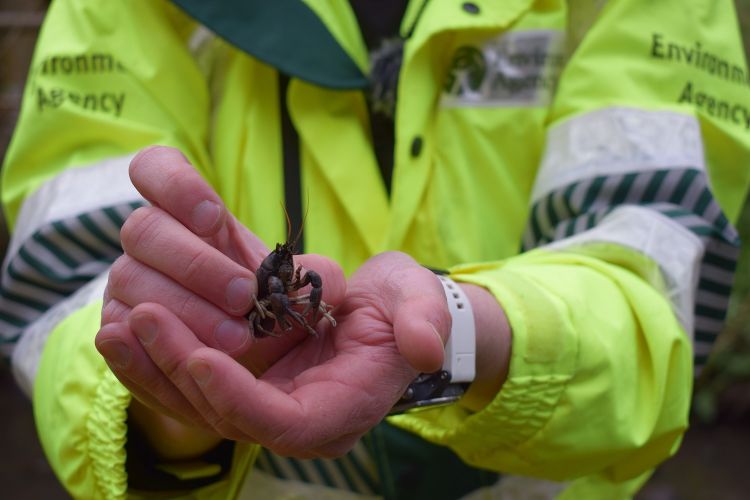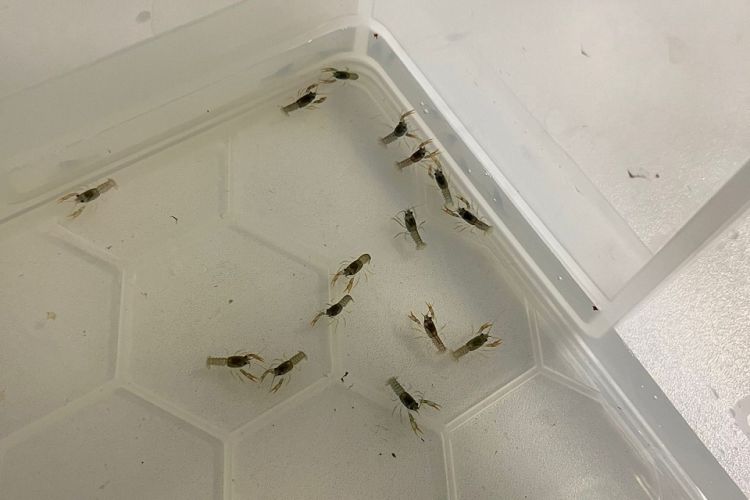More rescued crayfish moved to safety

Endangered white clawed crayfish that were in danger of being wiped out by crayfish plague have been moved to a safe haven in North Yorkshire.
In June, specialists rescued the population from Pudsey Beck in Leeds as part of a wider operation led by Environment Agency to safeguard the future of the native species in the River Aire catchment.
Those rescued, which included females carrying eggs, were kept for safekeeping in quarantine in tanks at the University of Leeds before passing health checks.
The crayfish – which now includes 300 babies born after the rescue took place - have been released into a Yorkshire Water-owned reservoir in North Yorkshire – known as an ‘ark’ site where they can live and breed safe from the threat of the invasive species.

Hundreds of baby crayfish were also released as part of the operation
"With so few populations of native crayfish remaining, we must act to preserve what we can,” said Environment Agency fisheries officer Dan Chadwick.
"The endangered white clawed crayfish plays a vital role in keeping our waterways healthy and as a source of food for other native species, so it’s important we take action to ensure its survival.
“Those rescued from Pudsey Beck – including babies that have been born since the rescue – have a new safe biosecure home where they are safe from invasive signal crayfish and the plague they carry.
“We will continue to work with our partners to safeguard the future of the native species, including carrying out rescues and finding them new safe homes.
“For anyone out and about in and around watercourses, we urge them not to move crayfish from where they are found but instead report any sightings to the Environment Agency.”
Commenting on the rescue, Dr Alison Dunn, Professor of Ecology in the School of Biology at the University of Leeds, who has been involved throughout the project, said:
“Invasive species and diseases can have serious consequences on our environment such as loss of biodiversity and extinction of native species.
The good news is there are things you can do to help keep native species safe.
“If you’re out and about in the environment – such as walking your dog, or fishing - please make sure to thoroughly clean and dry anything that’s been in contact with the water or riverbank, such as equipment and clothing. This will reduce the risk of spreading aquatic diseases.”
Yorkshire Water’s habitats and partnerships specialist Liz Norman also added:
“This work is critical in helping protect the future of our native crayfish and as a water company with reservoirs that are no longer in use for supply we can offer them a safe environment to thrive, away from the threats of invading signal crayfish.”
Images credit: Environment Agency




